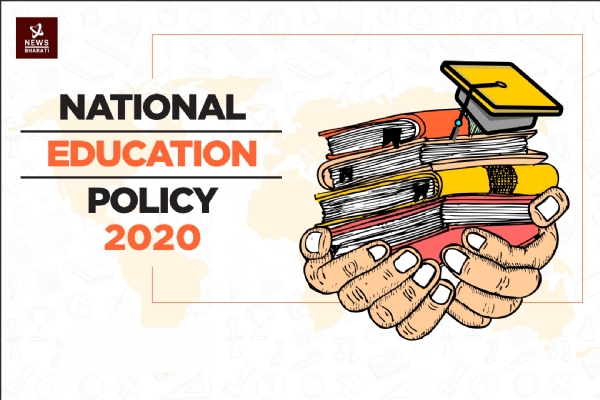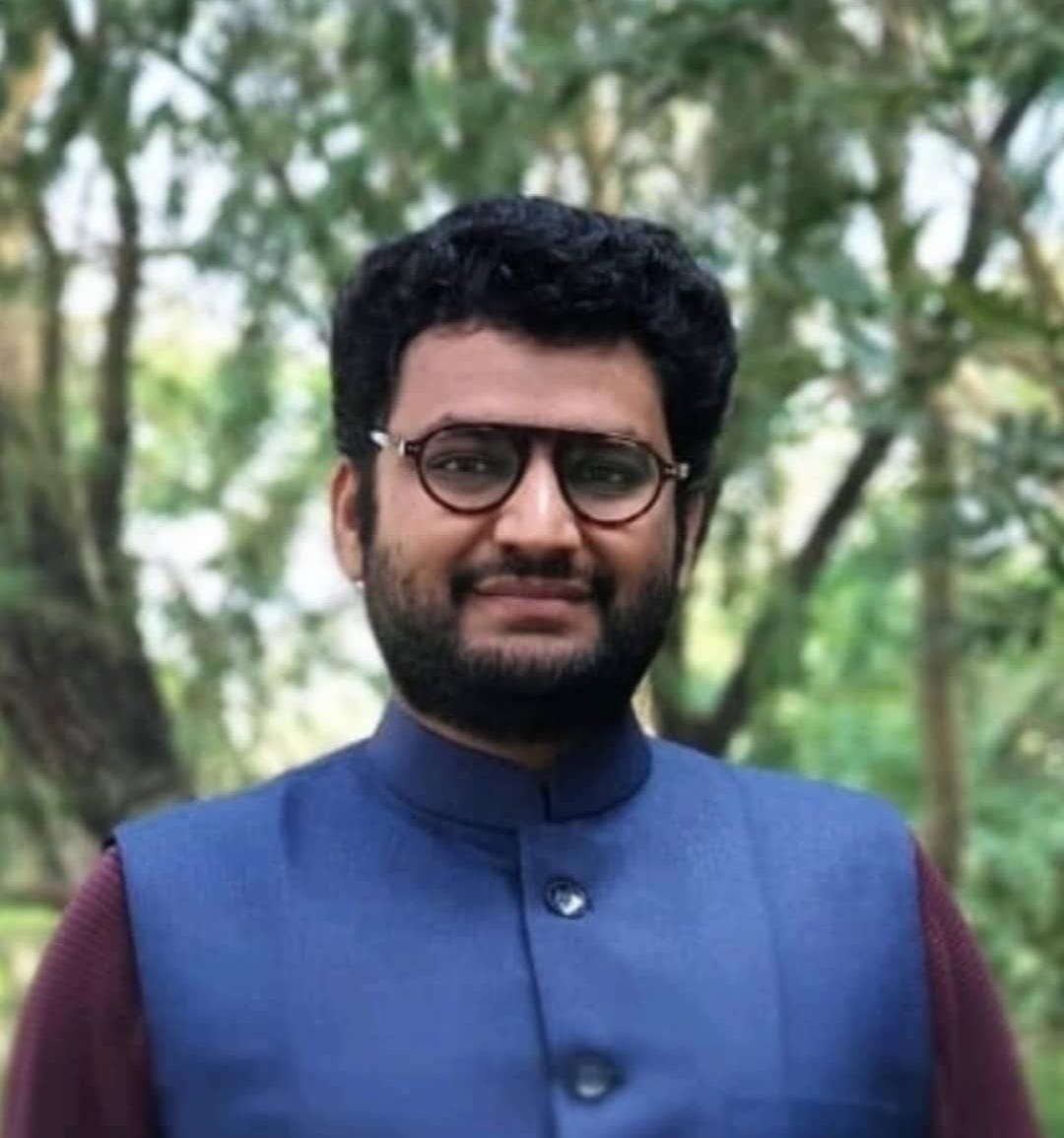Societal Revolution: New Education Policy 2020
The colonised mindset of Indians can be only changed by teaching about India to Indians and this can be done by New Education Policy 2020.
Total Views |
India has completed its 75th year of independence, but it seems that we are still lagging behind in producing skillful and knowledgeable human resources for the country. The question is why? Why are we not able to get as many patents registered as the western nations? Why are we not producing Nobel laureates? Why are our colleges not listed among the top 20 premier institutes of the world? Why does our youth have to travel out of India for higher studies? Why do our college graduates prefer working in a low-paying government job to a high-paying private job?

India is one of the oldest living civilizations on earth and was once rightly recognised as the Vishwaguru (a global knowledge superpower). For Indians, the pursuit of knowledge (Gyaan), wisdom (Pragya) and truth (Satya) was always considered in thought and philosophy as the highest human goal. World-class institutions of ancient India such as Takshashila, Nalanda, Vikramshila, etc set the standard of multidisciplinary teaching and research and hosted scholars and students from across backgrounds and education. The early Indian education system produced great scholars such as Charaka, Sushruta, Shankaracharya, Aryabhata, Chanakya, Panini, Patanjali, Sankardeva, and Nagarjuna among numerous others, who made seminal contributions to the world knowledge in diverse fields.
It is believed that prior to British rule, education in India was mainly in Sanskrit and Arabic. But after the ‘Minute of Indian Education’ by Thomas Macaulay there began a process of Anglicization of Indian education. His saying was, that by studying English, India will be able to connect to the world (especially the English-speaking world) and be civilised and cultured like the English.
“ONLY BY ENGLISH LANGUAGE CAN IT BE ENSURED THAT THERE ARE PEOPLE BORN IN INDIA WHO ARE INDIANS BY COLOURS and BLOOD, BUT ENGLISH BY MIND and IDEOLOGY.”
Two prominent issues sprung up with respect to Indian Education in post Independence India. The first being that, at least upto the age of 8th grade the medium of education should be the mother tongue. The second being that the Indian curriculum must also impart education about the Indian knowledge systems. Not imparting Indian knowledge is like de-rooting Indian youth, where we learn western values but miss out on the Indian values. We must always remember that our roots give us wings. The colonised mindset of Indians can be only changed by teaching about India to Indians and this can be done by New Education Policy, 2020.
New Education Policy, 2020:
The policy envisages that the extant 10+2 structure in school education will be modi1ed with a new pedagogical and curriculum restructuring of 5+3+3+4 covering ages 3-18.
A. Early childhood care and education: Foundation of learning.
Over 85% of a child’s cumulative brain development occurs prior to the age of 6 ECCE ideally consists of Rexible, multi-faceted, multi-level, play-based, activity-based and inquiry-based learning, language, numbers, counting, colours, shapes, indoor and outdoor play, puzzle and logical thinking, problem-solving, drawing, painting and other visual art, craft, drama and puppetry, music and movements.
It is envisaged that prior to the age of 5, every child moves to a “preparatory class” or Balvatika (that is before class 1), which has an ECCE- qualified teacher.
B. Empowers students through flexibility in course choice.
Students will be given increased flexibility and choice of subject to study, particularly in secondary school – including subjects in physical education, the arts and crafts and vocational skills – so that they can design their own paths of study and life plans.
There will be no hard separation among curricular, extracurricular, or co-curricular, among arts, humanities, and science or between vocational or academic streams.
C. Multilingualism and the power of language.
As research clearly shows that children pick up language extremely quickly between the ages of 2-8, that multilingualism has great cognitive bene1t too young students, and children will be exposed to a different language early on (but with a particular emphasis on mother tongue). Starting from the foundation stage onwards.
There will be a major report from the central and state government to invest in a large number of language teachers in all regional languages around the country mentioned in the 8th schedule of the constitution. The 3 languages learned by children will be the choice of states, regions and of course, the students themselves, so long as at least 2 of them are native to India.
In addition to high-quality offerings in Indian language and English, foreign languages such as Korean, Spanish, Portuguese, Russian, Thai, French, German, and Japanese will also be offered at the secondary level.
D. Transforming assessment for students.
Progress cards of all students for school-based assessment to parents will be completely redesigned by States/UTs under guidance from the proposed national assessment Centre, NCERT and SCERT. The progress card will be a holistic 360-degree multidimensional report.
E. Continuous professional development.
Each teacher will be expected to participate in at least 50 hours of CPD opportunities every year for their own professional development, driven by their own interests. Teachers doing outstanding work must be recognized and promoted and given salary raises, to incentivize all teachers to do their best work. A robust merit-based structure of tenure, promotion and salary structure will be developed, with multiple levels within each teaching stage that incentivize and recognizes outstanding teachers.
F. Financial support for students.
Financial assistance to students shall be made available through various measures and efforts will be made to incentivize the merit of students belonging to SC, ST, OBC, and other SEDGs. The national scholarship portal will be expanded to support, foster, and track the progress of students receiving scholarships. Private higher education institutes will be encouraged to over a larger number of free ships and scholarships to their students.
GOI will constitute a “Gender inclusion fund” to build the nation’s capacity to provide equitable quality for all girls as well as transgender students.
G. Curbing commercialization of education.
All higher education institutes HIE’s, public and private shall be treated on par within this regulatory regime. The regulatory regime shall encourage private philanthropic efforts in education. There will be common national guidelines for all legislative acts that will form private HEIs. This will cover financial stability, good governance, education outcomes, transparency of disclosure, and many more.
Way forward:
This NEP 2020 has far-reaching effects with respect to the Indian Education system. It will definitely raise the standards of our country’s education system. It will also create an all-around development of a student shifting from rote learning to root learning. Its implication and outcomes will be seen after a decade, young brains will be guided by the preference of their career orientation. The Indian education system is NUTAN, every time a new idea emerges from the same static points and verses. Government should encourage students and teachers to do intense research, they should increase their annual budget spending on education.


